If you’ve spent much time reading Blister, or seen any of the numerous pictures of us wearing sandals and flip flops in the parking lots at ski resorts, you may have picked up on the fact that we love sandals, and very much consider them to be a year-round wardrobe staple. (In our original post on flip flop footwear, Jonathan Ellsworth called flip flops, “one of the most underrated pieces of gear in the world,” and we all stand by that.)
Some of us love the simplicity and comfort of flip flops, while some of us prefer the versatility of more substantial options that we can use for hiking, fishing, or really anything as long as the temperatures are somewhere above freezing.
So Jonathan, Sascha Anastas, Sam Shaheen and I gathered here several of our favorites, from inexpensive flip flops to sandals that could conceivably replace your hiking shoes — and there are options for both men and women. Take a look…
Flip Flops
Teva Olowahu
Size Tested: Women’s 6
Stated Weight (women’s size 7): 85 grams per shoe
Upper: Polyester webbing
Footbed: “Mush” foam
Outsole: EVA foam
MSRP: $25

Sascha: The Olowahu sandal is one of Teva’s basic flip flop designs with a stylish twist, and is actually one of Teva’s longest-running women’s sandal designs. The Olowahu’s thin braided webbing is offered in a huge variety of colors, making this flip flop a great everyday sandal that can easily be dressed up or down. It’s also very lightweight, with a stated weight of under 100 grams per sandal.
The Olowahu’s Mush footbed is a half-inch layer of soft cushioning that makes for an instantly comfortable fit, though it doesn’t offer as much arch support as the options here from Chaco or Olukai. The polyester webbing is on the narrow side and tends to twist slightly when sliding my foot into the sandal which can make it a bit tight on my pinky toe, but once I’ve got the Olowahu on I don’t notice it much.
The polyester webbing is also quick to dry and, even when wet, I haven’t found it to be abrasive. I spent most of my time wearing this flip flop around town and hiking on mellow terrain (I don’t mind doing my light hiking in a flip flop). So if you are looking for a really affordable ($25!!), stylish flip flop for everyday casual use with the potential to use as a more dressed-up sandal on occasion, I would certainly recommend the Teva’s Olowahu sandal.
Teva Mush II Canvas
Size Tested: Men’s 10
Blister’s Measured Weight: 106 & 108 g
Upper: Cotton canvas webbing
Footbed: “Mush” foam
Outsole: EVA foam
MSRP: $25

Jonathan: The Teva Mush II Canvas flip certainly wins on price. And also, low weight. So if you are primarily concerned about really low weights and prices, here you go. They don’t feel nearly as refined or solid as the OluKai Holona below, but they are three times cheaper, too, and honestly, if you just need some flip flops for the occasional BBQ or short walk to the bar or beach, these will serve you fine. And bonus points for the canvas strap — it looks good and feels good.
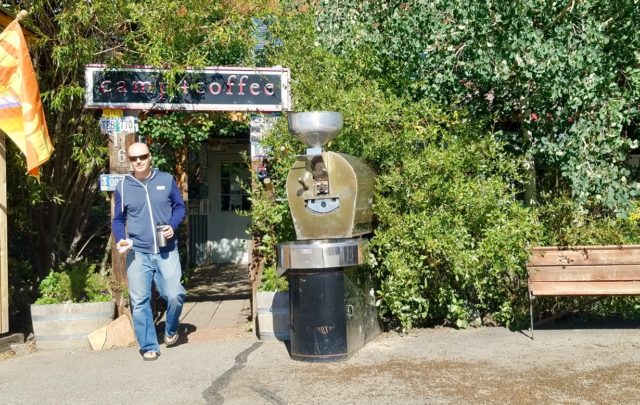
Sanuk Beer Cozy 2
Size Tested: Men’s 10
Blister’s Measured Weight: 158 & 166
Upper: Synthetic webbing with neoprene lining
Footbed: Yoga mat foam
Outsole: Rubber
MSRP: $36
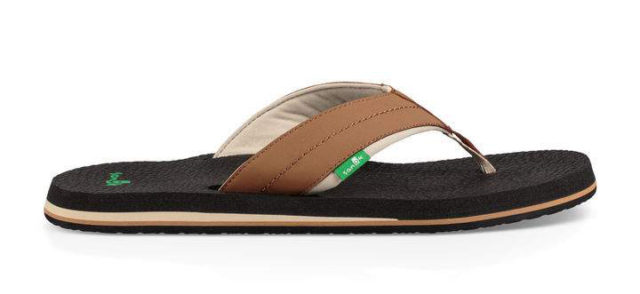
Jonathan: The Beer Cozy 2 is most similar in terms of both price and feel to the Teva Mush II Canvas. It has the squishiest ride and foamiest feel (foamiest is a word, right?) of any of the flip I’ve ever reviewed, so for you squish-lovers out there, these might actually be your favorite flips in our roundup. They definitely have that … um … “classic” flip flop feel (read: cheap), but if that’s how you still think of the flip flop genre (many people do) and you’re cool with it, then we’re cool with it. We just want you to be happy.
Sanuk Brumeister
Size Tested: Men’s 10
Blister’s Measured Weight: 251 & 260 g
Upper: Synthetic leather straps
Footbed: Yoga mat foam
Outsole: Rubber
MSRP: $42

Jonathan: The Brumeister is the more water-friendly option than the Teva Mush II Canvas or the Sanuk Beer Cozy 2, so if you intend to get your flips wet a bunch, these would be the flips to consider (along with the OluKai ‘Ohana, Holona, KIA‘I II and / or Chaco Flip).
The other thing to say is that the Brumeister feels a little longer, wider, and (some might say), clunkier than the other flips I’ve mentioned here, but the chunkier platform will certainly appeal to some folks.
It should be clarified that neither the Sanuk Brumeister nor the Beer Cozy 2 have bottle openers on them (my opinion about flips that have bottle openers on their soles is already on record), but the Brumeisters do have a tread pattern stamped into the sole made up of rubber beer bottles with smiley faces, so if that’s your primary flip flop criteria, you can stop reading this roundup.
Finally, in terms of squish, the Brumeister is unique in that it has a squishier heel (that’s similar to the Beer Cozy 2), but a firmer forefoot (that is more firm than the Teva Mush 11, not quite as firm as the OluKai Holona). So if you have particularly sensitive and / or bruised heels, you might like the more-cushioned heel of the Brumeister.
Chaco Flip EcoTread
Size Tested: Women’s 6 & Men’s 10
Blister’s Measured Weight (men’s size 10): 276 & 281 grams
Upper: Polyester Webbing
Footbed: Polyurethane (PU)
Outsole: EcoTread Rubber (25% recycled)
MSRP: $65
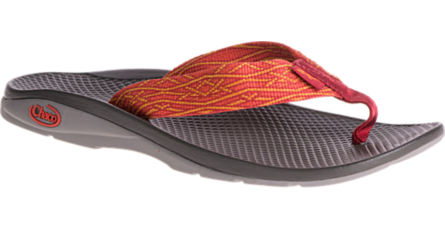
Sascha: Chaco’s Flip EcoTread has been my go-to flip flop sandal for probably the better half of the last 10 years. I can’t imagine going through a summer season without a pair of the Flip EcoTread in my closet. I think it’s definitely one of the most durable flip flops out there, and it seems that this sentiment has been the general consensus across the board here at Blister. The women’s and the men’s versions are the same, so for a more detailed review on the Flip EcoTread check out Jonathan Ellsworth’s review.
OluKai ‘Ohana
Size Tested: Women’s 6 & Men’s 10
Blister’s Measured Weight (men’s size 10): 220 & 226 grams
Upper: Water-resistant synthetic leather w/ jersey knit lining
Footbed: Compression-molded EVA foam
Outsole: Non-marking rubber
MSRP: $65
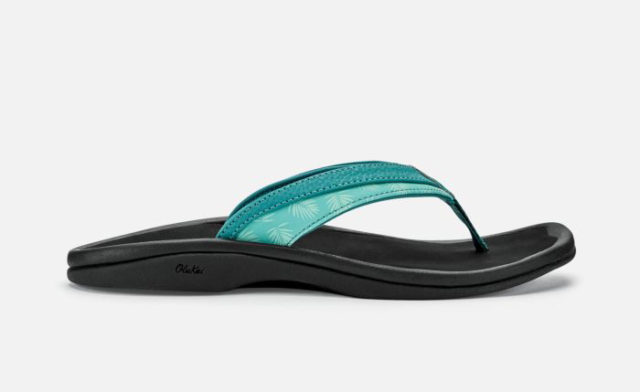
Sascha: The ‘Ohana flip flop was my first pair of OluKai sandals and I have to admit that it was love at first sight from the second I put the flip flop on my foot. The footbed consists of a soft almost velvety-like material that was adequately stiff and supportive in the arch. I was a little nervous that the velvety midsole would be slick when wet. And while it was a bit more slippery than the Chaco Flip EcoTread, the ‘Ohana wasn’t as slippery as I had anticipated and the thick, water-resistant straps fit snug enough to keep my feet fairly stable when the sandals were wet.
The soles of the ‘Ohana are stiff and feature a durable, grippy tread. Additionally, on the edge of the tread the ‘Ohana feature what OluKai call their “razor siped edge” to help with traction when walking on wet surfaces. In addition to everyday casual wear, I wore the ‘Ohana while wading in creeks, walking along sandy beaches at lakes, and hiking moderate rocky trails with the dogs (and kiddo in a backpack).The straps are made of a synthetic durable material and are lined with a softer mesh that feels soft against the skin and comes in a wide variety of colors including two-tone color options and, for those fashionistas out there, metallic gold, pewter, and platinum options. I opted for the basic black color option and found that I could wear the sandal with just about any outfit.
And for thoughts on the men’s version, check out Jonathan Ellsworth’s review.
OluKai Holona
Size Tested: Men’s 10
Blister’s Measured Weight (men’s size 10): 248 & 256 grams
Upper: Water-resistant synthetic leather w/ jersey knit lining
Footbed: Polyurethane (PU)
Outsole: Non-marking rubber
MSRP: $80
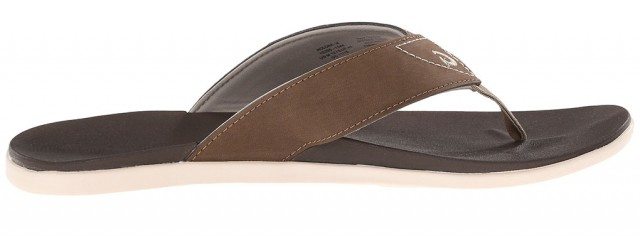
Jonathan: I first wrote about the Holona two years ago in this post, back when I only had about 30 days in them.
I now have at least another 700 days in the same pair that I reviewed back then, and if I had to make a list of the Top 10 products I’ve reviewed at Blister — out of all the product categories — the Holona is easily in my Top 10. I love them.
The Holona are low-profile flips that look fantastic. (FWIW, I’m a big fan of the Mustang / Dark Java colorway.) They are a firmer platform than all of the other options I’ve reviewed here, and I love that firmer platform. I personally don’t love a lot of squishy, imprecise-feeling cushioning in my running shoes, so I certainly don’t need a bunch of squish in some flips.
And while these are literally 3 times as expensive as some of the other options here, they feel so much better and have a much more refined fit and feel (for my feet, at least), that unless (a) your footwear budget is sub-$40, or (b) you like a squishier, less refined-feeling glop of flip (sorry, but it’s true), or (c) you’ve come to like the feel of a cheaper flip flop — maybe they make you nostalgic for the flips in some onsen that one time you went to Japan? — I can’t imagine passing on these sandals that you’ll probably end up wearing everyday. For crying out loud, many of you reading this just spent thousands of dollars on a mountain bike, nearly a thousand on skis, and at least several hundred on ski boots. Spend the dough. Save up if you have to. They’re worth it.
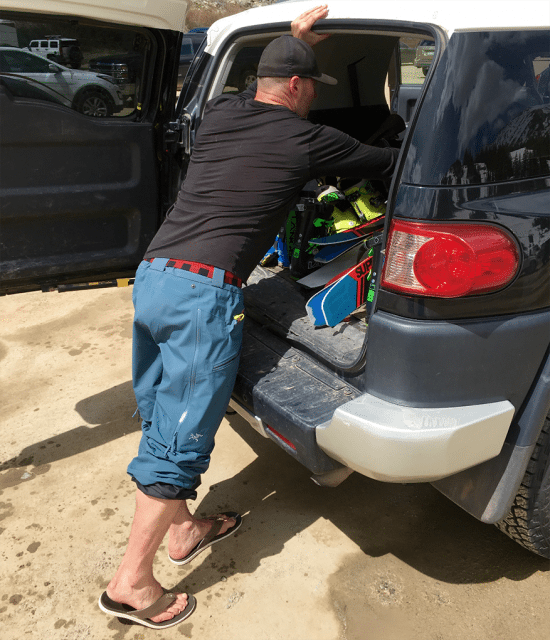
And just to be clear (and as I wrote two years ago) I’m not subjecting these to the same stuff that I run the Chaco Flip through, but — two years ago — these replaced my Flips as my everyday flip flop.
Hiking / Water / All-Round Sandals
Teva Original Universal
Size Tested: Men’s 8
Blister’s Measured Weight (men’s size 8): 185 & 189 grams
Upper: Polyester webbing
Footbed: EVA foam
Outsole: Rubber
MSRP: $50
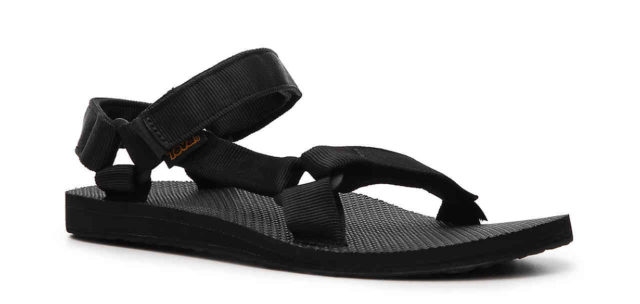
Sam: The Teva Original Universal is the classic Teva silhouette. The fit feels secure with velcro across the ankle and forefoot and the sole is thin, flexible, and very lightweight (around half the weight of most options from Chaco), which makes this sandal quite comfortable. But while the Chaco sandals in this roundup really shine on trails and uneven ground thanks to their excellent arch support, the Original Universal is definitely better suited for mellower terrain. We definitely prefer the Chaco sandals’ firmer, more supportive PU footbeds over the Original Universal’s lighter EVA foam when it comes to trek across sharp rocks, scree, or talus.
But for car camping, barbeques, dog walks, traveling, use around the city, and any sort of activity where the ground is relatively tame, the Original Universal sandals are so light that I hardly feel them on my feet, and the footbed is very soft and comfortable. They are my go-to sandals for everything short of hitting the trail, and they come in at a very reasonable price of $50.
Chaco Z/2 Classic
Size Tested: 10
Blister’s Measured Weight (men’s size 10): 400 & 400 grams
Upper: Polyester webbing
Footbed: Polyurethane (PU)
Outsole: Non-marking ChacoGrip™ rubber compound
MSRP: $105
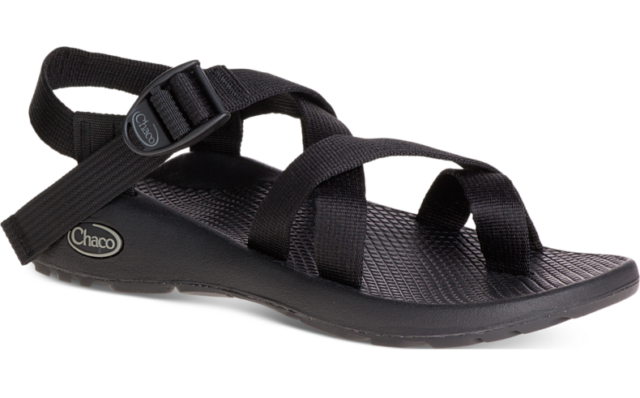
Luke: Chaco’s original sandal design has been around for nearly 30 years now, and it’s still one of the best all-around sandals out there. Its “LuvSeat” footbed is made of the same PU material that’s often used in hiking boots, which makes the Z/2 Classic feel very supportive and capable of long day hikes. The downside to this is the weight — the Z/2 Classic is quite heavy compared to the Teva Original Universal sandal. But if you don’t mind the weight, the Z/2 Classic is a capable sandal that feels just as comfortable on a trail as it does in the water.
The Z/2 Classic features Chaco’s well-known adjustable “Z” strap design which, apart from creating a widely recognizable tan line, also lets you fine-tune the fit throughout the whole sandal. It can be a bit tricky to dial in the fit at first, but I find that after a day or two I can find the fit that I like and then just leave it, only opening up the main buckled strap to get in and out of the sandal.
I have spent several years and hundreds, if not thousands of days in various versions of Chaco’s classic sandal design and have found them to be very durable. And when the rubber finally starts wearing down or the webbing begins to fray, you can send in the sandals to Chaco to have them repaired.
So if you want a sandal that can do double-duty as a light hiking shoe and aren’t as concerned with low weight, the Z/2 Classic is an excellent option. And if you prefer a sandal without the toe loop, check out the Z/1 Classic.
Chaco Z/Cloud
Size Tested: Men’s 10
Blister’s Measured Weight (men’s size 10): 399 & 400 grams
Upper: Polyester webbing
Footbed: Dual-density polyurethane
Outsole: Non-marking ChacoGrip™ rubber compound
MSRP: $110
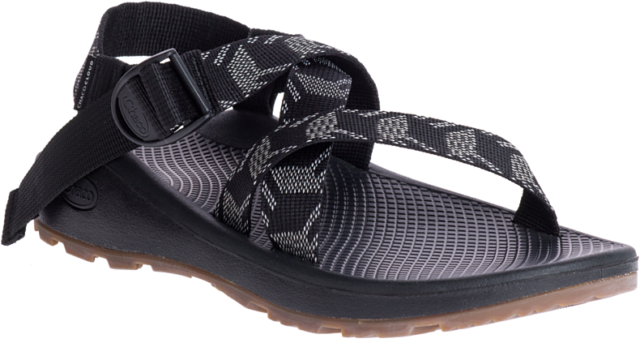
Luke: The Z/Cloud is a recent spinoff of the Z/1 Classic, and features a new dual-density PU footbed that is noticeably softer and squishier than the footbed on the Z/1 Classic. I know some people that have found the standard PU footbed of the original Chaco sandals to feel a bit too firm, and for those people, the Z/Cloud is an excellent option.
The Z/Cloud’s dual-density footbed still provides nearly all of the support of the Z/Classic’s footbed, but feels a bit more forgiving and plush. What the Z/Cloud doesn’t change is the proven adjustable strap design that’s made Chaco famous.
I think the only thing that still needs to be determined with the Z/Cloud is how durable the softer upper portion of its footbed proves to be. But after spending around 40 days in the Z/Cloud this summer, I have zero issues to report.
Chaco Z/Canyon 2
Size Tested: Men’s 10
Blister’s Measured Weight (men’s size 10): 406 & 410 grams
Upper: Polyester webbing + TPU heel strap
Footbed: Dual-density Polyurethane & running-inspired “Kinetic Rebound” plate
Outsole: Non-marking ChacoGrip™ Plus rubber compound
MSRP: $120
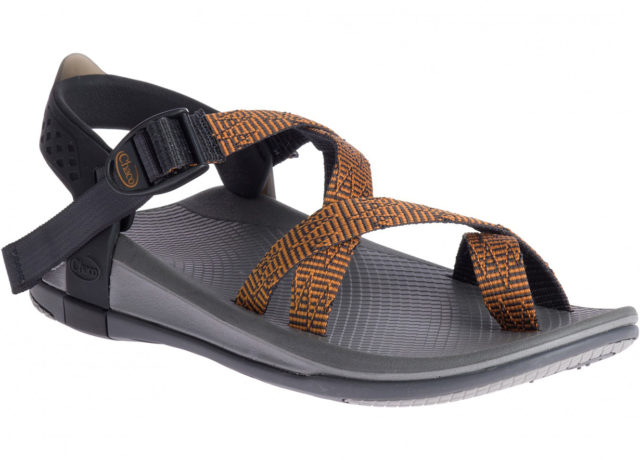
Luke: If you want a more trail-oriented version of the Chaco Z/Cloud 2 or Z/Classic 2, the Z/Canyon 2 is definitely worth a look. It features several updates that are designed to make it even more capable and comfortable on the trail.
The Z/Canyon 2 features a softer, dual-density PU footbed that’s similar to the Z/Cloud, but also has what Chaco calls a “Kinetic Rebound” plate which is supposed to provide more energy return with each step. I don’t think the difference is extreme, but the Z/Canyon 2 does offer a bit more bounce and flex than the Z/Cloud, and definitely the Z/2 Classic.
Another noteworthy change is the Z/Canyon 2’s outsole. It features a more open lug structure with lots of little “pods” that I’ve found to offer significantly better traction on rocks, sand, and dirt compared to the more water-oriented outsole on the Z/2 Classic and Z/Cloud.
Lastly, the Z/Canyon swaps out the traditional webbing heel strap for a flexible TPU piece. Chaco says this is designed to lock in the heel better while hiking. Overall, I didn’t notice the TPU heel strap that much since my heel rarely touches the heel strap on any pair of Chacos I’ve used (because the forefoot straps already do a very good job of locking down my foot). The one potential drawback to the TPU strap is skin irritation — I haven’t had any blisters yet, but I have noticed it rubbing on my heel more than the webbing heel straps on the other Chacos I’ve used.

You should try Islander 10 Series Flip Flop Sandals. It’s the best-selling sandals in the Philippines, and visitors from the US buy lots of them here. The company that makes Islanders have been making slippers since the 60s. From the rubber flip flops we’re familiar with, they made the ultimate pair of sandals to address durability, comfort, design and quality. Thus, Islander was born in 1988. You can check them out at the-sandals-and-stuff-rack.myshopify.com. We brought this brand to the US so you can experience Islander and enjoy them.
Very helpful article! Thank you!
Any recommendations on what to replace Chaco Flip with Ecotread? I have a couple of pairs I’ve worn for years and they are all in various stages of falling apart. Can probably still go another summer at least, but wanted to see what else is out there. I’ve tried the Chaco Classic and Chaco Lowdown flips and they both seem like an ok replacement. Wasn’t sure if there’s another brand or style I should be looking at? Thanks!
My friend and I live in New Zealand and wear sandals all the time including for bushwalking. For the last 15 years we have worn Tevas. They were solid and well built and could be totally relied on for at least two years until there was visible wear on the tread. Their feature was that the straps went right through the sole so that they wouldn’t come apart even if the glue failed. About five years ago they were redesigned to last a year by having cheap strapping material and a cheap soft pliable sole. Since then we’ve had three pairs of sandals fail because the front strap wore out inside the sole shortly after the one year guarantee period lapsed without any significant wear on the sole. We’ve also had at least four pairs in which the sole came away from the strap on one side before there was any noticeable wear on the sole. The new soft flexible sole can catch on the ground and cause you to trip. This cannot effectively be repaired. They’ve replaced at least three pairs and turned us down for replacements at least two times because we were as little as one month outside the guarantee. We have since found another solid, well made brand of sandal which are what TEVA used to be and are unlikely to use TEVA again. In our. opinion the poor quality of modern Tevas makes them unsuitable for tramping.